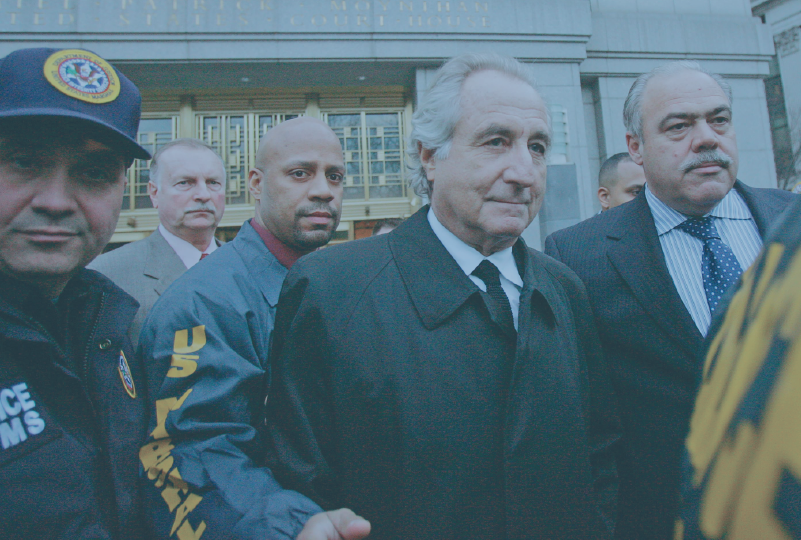Client Stories
Explore case studies of Jacob Steins recent work for a better understanding of how he can protect your assets. With a track record of success, Jacob has assisted countless clients, including businesses and individuals, in safeguarding their assets. These are authentic cases, each presenting its own unique complexities. Client identities have been altered to ensure confidentiality.

Mama as a guarantor
Our client, a 73-year old woman, guaranteed her son’s loan. The son’s real estate business failed and the bank came after mom to collect the personal guaranty. The personal guaranty, plus penalties and interest, would have wiped out mom’s entire estate. All the assets she had accumulated over her entire life would have vanished.
We implemented an offshore structure to protect her liquid assets (which comprised the bulk of her wealth). The bank, having reviewed the structure, opted not to pursue the assets and let her be.
This is not a result we can guaranty. We can guaranty that if she did not attempt to protect her assets, this result would be impossible. Doing something is almost always better than doing nothing.

Protection from a government agency - Bank Freeze: Don't get your bank accounts frozen
Our client was a successful cosmetics company. They have seen several of their competitors investigated and picked apart by an agency of the federal government. This agency has the habit of initiating their investigations by presuming guilt, and freezing all the bank accounts they can get their hands on. Once the bank accounts are frozen, the business is unable to pay its employee, vendors or lawyers. Many of these businesses fail before they are able to prove their innocence.
We transferred the cash balances of the bank accounts of this business into offshore structures and offshore bank accounts. Once the cash is overseas an agency of the U.S. government is unable to freeze the bank accounts. This allows our client to fight the agency and survive. We have also move the intellectual property of this business into a stand-alone entity and, to be on the safe side, implemented asset protection for the personal assets of the business owners.

The Malibu Plastic Surgeon
Dr. Yakitori is a 33-year old single man. Despite his youth, he quickly built up a fabulous practice doing elective cosmetic procedures. When he visited our offices he was fearful that one of those procedures – his patient was a well-known entertainer – may have gone bad, with disastrous consequences.
Because Dr. Yakitori is single, a transmutation agreement was out of the question. Dr. Yakitori also had no qualified retirement plan. What Dr. Yakitori did have was cash, and lots of it, all sitting in Los Angeles banks and brokerage firms. We advised Dr. Yakitori that he was an ideal candidate for a foreign asset protection trust, i.e. a trust formed in a country whose laws are friendly to him and hostile to all of his creditors. As with everything in Asset Protection, there is no foolproof strategy. But if a FAPT is entered into and funded (i.e. the assets titled in the name of the trust) early enough, a FAPT is the closest thing in the world to a sure thing.
Dr. Yakitori was concerned about transferring the bulk of his wealth to a country he has never heard of before. We advised him that initially the money could remain with his existing banks and brokerage firms, provided that the accounts should be retitled in the name of the FAPT. Eventually, Dr. Yakitori would need to move the cash offshore, but not to some small Caribbean nation. Instead, the money would be moved to a large private bank in Switzerland or the Singapore. This would allow Dr. Yakitori to take advantage of the favorable trust laws of the asset protection friendly jurisdictions while investing his money in a safe financial center.

Protecting a medical practice: The Nervous Neurosurgeon
The successful neurosurgeon owns a home, an apartment building that is a highly-appreciated investment, a large stock portfolio, and his medical practice. Because he was sued for malpractice in the past, he was concerned about his continued liability exposure.
The doctor and his wife of forty years reside in California, a community property state. One of the worst aspects of community property law is that a creditor of one of the spouses can collect against both halves of the community property.
We provided a fix to this dilemma with a transmutation agreement, an agreement between the doctor and his wife to convert their community property into separate properties. We made sure that the assets that a creditor might have an easier time getting at went to the wife, who is the spouse less likely to be sued. The doctor retained the assets a creditor would find useless, such as the assets in his medical practice.
We insulated the assets going to the wife even further. The apartment building was transferred to a limited liability company and the home was transferred to a residence trust.

Protecting business owners: When Liability Isn't So Limited
Bill and Don each own shares in a building-supply company with Bill owning 75% of the stock and Don owning 25%. Years ago, they had been told that doing business in corporate form affords the owners a certain degree of asset protection. The problem: that is true if the lawsuit arises out of the operation of the business. But it isn’t true if the lawsuit is aimed at Bill or Don personally.
Bill was involved in a minor automobile accident. He was surprised when we informed him that if the plaintiff obtained a judgment against him, nothing would prevent the plaintiff from obtaining his stock in the company making him the controlling shareholder.
Our solution? We converted the company from a corporation to a limited liability company. The result is that there are no shares for the creditor to attach and no possibility of a creditor of one of the owners to seize the assets of the business or otherwise get involved in its operations. Unlike corporate stock, interests in LLCs are protected from claims of creditors in virtually every state.

Protecting a family business: Assisting Assisted Living
The mother and son owned six assisted living facilities employing approximately 60 full and part-time employees. Some were salaried, others paid on an hourly basis. When they fired an incompetent employee, the employee returned the favor by filing a wage-and-hours lawsuit, alleging underpayment. Because employees were not required to keep time sheets and the law in this area favors employees, the owners were anticipating a judgment in favor of the employee.
Even more than this isolated lawsuit, their greatest fear was a class-action lawsuit that they were sure the plaintiff’s attorney was considering. It was important to terminate this lawsuit quickly and establish to the plaintiff’s attorney that there was no pot of gold at the end of the litigation rainbow. To do this, they had to implement asset protection planning… and quickly.
Our firm developed and implemented an asset protection plan for them within four days. Two days later, the plaintiff’s attorney was apprised of the owners’ new asset ownership structure. Although the plaintiff could have challenged the implemented planning as a fraudulent transfer, for some reason they chose not to. It is possible that the plaintiff’s attorney, who was working on a contingency basis and anticipating an easy kill, did not want to go through protracted and expensive litigation challenging asset transfers. Even if the challenges were successful, the plaintiff may not have been able to recover the transferred assets. Our clients were very grateful.

Protecting financial investments: Fallout from Madoff
A former director of a Fortune 100 company found just how dramatically Madoff’s Ponzi scheme has impacted so many people. He had invested some money with Madoff many years ago, and over time has generated a decent return. He was lucky enough to pull the bulk of his Madoff investments about before the collapse, and was quietly enjoying his retirement. He learned that there is a good chance the Madoff bankruptcy trustee would be able to reach most of his savings. He was 74 years old and in a complete state of panic.
To protect his investment account we set up an offshore trust-offshore LLC structure, with the money being moved to an investment account in Switzerland. Because funds were moved from one investment account to another, he did not need to sell any of his securities. He has complete access to his investments and fully discloses the offshore trust and bank account to the IRS. With this structure there is no need to hide, it simply works!

Protecting your home: The Unfortunate Widow
The woman was 84 and a widow. She had been living in the same house for 30 years, and it was fully paid off. She had virtually no savings, and lived off her Social Security benefits.
She was involved in an automobile accident and was sued. The plaintiff asked for $200,000 in excess of her insurance coverage. She was in danger of losing her home.
Representing the woman on a pro bono basis, we transferred the ownership of her house to an irrevocable trust. Seeing this, the plaintiff ceased its efforts to pursue our client in excess of her insurance limits.
While the woman is not a typical asset protection client, her case is an excellent example of an important point- you do not need to be uber-rich, or rich at all, to engage in asset protection planning. We all have assets worth protecting. Whether your home equity is $200,000 or $2,000,000, the emotional attachment and the need to protect it is the same.

Safeguarding your business: Building Protection
The company is a successful California-based home builder. Over the past few years, following many construction defect lawsuits, the firm found it more and more difficult to carry liability insurance. Coverage was just too expensive. Eventually, the decision was made to stop carrying insurance coverage altogether.
Without insurance coverage, the company-and possibly its owners-were exposed to future lawsuits. Asset protection for the company and its owners was the best alternative to insurance coverage.
The company’s operations had to be restructured so that the liability arising out of any one building project would reach only a limited amount of the company’s assets, if any. A separate legal entity was established for each construction project. Their protection was enhanced further by having different entities own the real estate and do the development work.
An additional layer of entities further insulated the individual owners from the liabilities of the business. The ownership of the personal assets of the owners was further restructured.
In its first test, this protective structuring worked as planned-seeing the level of protection it faced, the plaintiff dropped a potential class action lawsuit and accepted a surprisingly low settlement offer.
